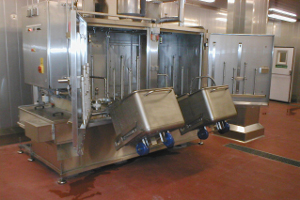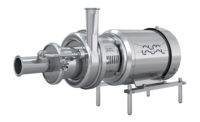By CM Process Solutions
Hygiene mandates in food production and packaging facilities continue to be a critical focus of processors and regulators, yet some companies still cling to cumbersome and less-than-effective methods of washing and sanitizing containers used in the process stream.
Although existing regulations may not mandate a specific level or methodology of cleaning and sanitizing, there are hygiene and efficiency related reasons that food processors should pay more attention to this process.
In hand washing operations, including power spraying, there is much room for human error. Workers may not achieve the water temperature required to properly sanitize containers. Even after hand washing, food remnants and cleaning agent residue can remain in the seams and corners of containers put back into use.
By automating the washing process, however, food processors are assured a complete cleaning and sanitizing of containers every time.
There are also other benefits that add to the strong economic case for integrating automated washing systems. For example, saving on wasted labor and floor space and improving on production throughput are important incentives for many food processors.
“Washing systems are becoming an integral part of the food processing line,” says Mark Corser, president of CM Process Solutions, Corona, Calif., a nationwide supplier of stainless steel hygiene equipment, including commercial and industrial washing systems, for the food processing, pharmaceutical and distribution industries.
“Instead of manually washing containers with a hose or pressure washer, which introduces risk into the process, more companies are installing systems that automatically meet its specific washing and sanitizing needs, and are also adding to their volume capacity as well,” Corser explains. “This approach ultimately impacts product quality.”


